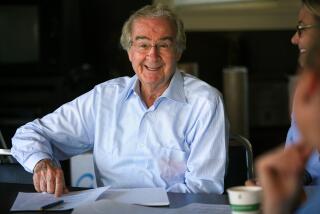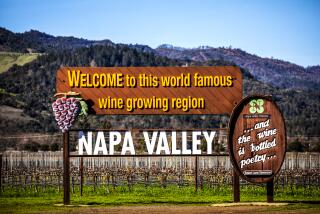A Rocky Start, But a Smooth Finish
Imagine being handed a priceless treasure and told to leap across a pit full of rattlesnakes in a stadium packed with enemies who hope you fall in.
That’s how Bob Cabral felt in 1998 when he took over winemaking duties at Williams Selyem, one of California’s original and most successful cult wineries. The treasure was the reputation of a winery that is not only considered one of the New World’s finest Pinot Noir houses, but is also fiercely cherished by its many fans.
“Everybody hoped I would fail,” he says. “I knew the press would be brutal, but they were more brutal than I’d imagined. I didn’t know there was such a sense of ownership with this brand. The media, the customers, even other winemakers, were all just waiting for me to blow it.”
During the two years between the ’98 harvest and the first releases of those wines in 2000, Cabral and Williams Selyem’s new owner, New York businessman John Dyson, were the object of relentless second-guessing and negative innuendo. Being roundly hated for being the new guys was just the beginning.
First, there were rumors that the winery was going to start pumping out huge quantities of mediocre wine. Wine critic Robert M. Parker Jr. speculated the winery “could just try to make a lot of money living off the good name for a few years.” A New York Times article noted gloomily, “If Williams Selyem stumbles, plenty of able competitors are waiting to lure its customers.”
But the winery’s co-founder and original winemaker, Burt Williams, who had chosen Cabral as his successor, counseled patience. “Burt told me not to worry about it,” Cabral says. “He said when they taste your first vintage, they’ll shut up. Let the wines do the speaking and bite your tongue.”
Four years after the sale, Cabral’s wines are speaking clearly in the Williams Selyem voice. Although his inaugural 1998 vintage was a tough one in California, Cabral’s wines were well received by critics and consumers. So were the ‘99s. And the 2000s and ‘01s I tasted at the winery last week were impressive.
By all accounts, the Williams Selyem wines are as good as ever with Cabral in the winemaker’s boots.
Two Guys and a Garage
When wine fanatics toy with the idea of putting their life savings into starting a winery, they’re imagining Williams Selyem. It was founded as Hacienda del Rio in the early 1980s by two longtime friends: Williams, a printer, and Ed Selyem, a grocery store manager. When the previously established Hacienda Winery threatened litigation over the name in 1985, they changed to Williams Selyem.
The first wines were made in Williams’ garage, then in rented space before the move to the current Russian River Valley facility in 1986. They didn’t go in to the vineyard business, preferring to make small lots of wine from outstanding sites such as the nearby Rochioli and Allen vineyards. The flagship wine came from Rochioli’s West Block, some of the oldest Pinot Noir vines in western Sonoma County. There were several other vineyard-designated Pinots, and a chewy, intensely peppery Zinfandel from the old Martinelli family vineyard known as Jackass Hill.
When the partners decided to retire in 1997, they seriously considered closing the winery doors for good rather than pass their reputation to unknown hands. At the same time, the scent of money was in the air. There were plenty of interested buyers ranging from large corporations to wealthy individuals such as retired football star Joe Montana.
The suitor who eventually persuaded them to sell, Dyson, was a longtime Williams Selyem mailing list customer who owns wine estates in New York (Millbrook Estate) and Tuscany, Italy, (Villa Pillo), and vineyards on California’s Central Coast and in the Russian River Valley.
“They had two conditions for a buyer,” Dyson recalls. “They said you had to own a winery already, and you had to be on their mailing list.”
They quickly struck a $9.5-million deal. Then Dyson met with Cabral, a relatively unknown winemaker in his late 30s. A Fresno State enology graduate who began his career making bulk wine in the San Joaquin Valley before moving on to stints at DeLoach, Kunde and Alderbrook, Cabral was struggling to reconcile his training as a production winemaker with his passion for distinctive, terroir-driven wines.
Cabral told Dyson that he had a condition too: He wouldn’t take the job unless he got a bigger allocation of Williams Selyem wine.
“But the main thing we ended up talking about at our first meeting was soil science,” Dyson says. “I thought that was a good sign.”
Cabral had just taken over as winemaker at Hartford Court, another highly regarded Russian River Valley Pinot house. But with little hesitation, he finished making the ’97 Hartford Court wines and moved across the valley to one of the most intensely coveted jobs in California wine.
Williams Selyem was a true artisan winery from the start. Williams and Selyem handcrafted the wines.
They fermented the grapes in small, stainless steel tanks purchased from a dairy, using naturally occurring yeast rather than commercial inoculants. When they did begin inoculating in the mid-1980s, it was only with a cleaned-up version of an indigenous strain from Jackass Hill isolated by Vinquiry, a commercial laboratory in Healdsburg, Calif., (and now available to winemakers as the Williams Selyem strain).
The French Touch
They punched the caps down by hand, Burgundy-style, gravity-fed the wines to French oak barrels for aging, and bottled them without filtration to avoid stripping out flavor and complexity.
Cabral insists he hasn’t deviated from Williams’ winemaking methods. “I’ve never worked so hard in my life not to change something,” he says, although when pressed, he admits, “I do a little more lab work than Burt did. One of the first things I did was buy a microscope.”
Production has increased, but only by about 2,000 cases so far (from 8,000 to 10,000) of small, vineyard-designated bottlings. The wines sell for $22 to $70 a bottle, which is essentially a wholesale price, because buyers are dealing directly with the winery. Of course, those same wines can instantly be resold for as much as three to five times that price.
Cabral says that eventually production will be 15,000 cases, mostly in the Russian River Valley and Sonoma County appellations, but also with several new vineyard designates. He’s particularly excited about a new Central Coast bottling from Dyson’s vineyard in Hollister, not far from Calera, the Pinot Noir specialist. The 40,000 cases of plonk feared by skeptics haven’t materialized, and Cabral says they won’t.
Most of the immediate growth is in the reintroduction of Zinfandel and Chardonnay. They had been phased out when the winery began focusing almost exclusively on Pinot Noir, but Cabral and Dyson are adding them back to the mix.
A New Way With Zin
Some of the new Zins stood out in my tasting last week. The ’00 Feeney Vineyard (78 cases) is remarkably thick and intense, yet clear on the palate and finely structured. The same combination of lush and firm shows in two small bottlings from the Forchini Vineyard, South Knoll (from sandy soil) and North Flats (more clay).
Of the six single-vineyard ’00 Chardonnays (200 to 300 cases each), the high-toned intensity of the Allen Vineyard and the lemon-drop succulence of the coastal Hawk Hill Vineyard were especially outstanding.
Of course, the Williams Selyem cult worships Pinot Noir above all. The source of the fabled West Block bottling was lost with the sale (Tom Rochioli now produces a stunning Pinot from his own grapes), but there are plenty of other single-vineyard bottlings to adore. I found a fascinating comparison in the ’00 Allen and the ’00 Rochioli River Block Pinots. Everything about them is the same except for the age and location of the vines. Allen was planted in 1969 (by Joe Rochioli, who manages the vineyard) and River Block was propagated from the Allen vines in the mid-1990s.
So the plant material, vineyard management and winemaking are the same. Yet the wines are subtly but distinctly different.
The deep sandy loam and riverine gravel of River Block yields a big, regally proportioned Pinot with deep flavor that moves through the palate like ... well, a river.
The shallower clay soil on the marginally higher Allen site gives a more spicy, rose-inflected perfume, and fruit that seems a little more vibrant while still maintaining a majestic length and breadth.
All in all, Williams Selyem Winery’s stature as a cherished institution does not appear threatened. Coveted spots on the Williams Selyem mailing list are being handed down like family heirlooms to a new generation of wine fans. Since the first list was started in the mid-1980s it has grown to some 15,000 customers (with another 1,200 on a waiting list) who are prepared to buy whatever the winery offers, at virtually any price.
Dyson’s place on the list is in the mid-700s. And customer No. 576 is Cabral.
Rod Smith is writer-at-large for Wine & Spirits Magazine.
More to Read
Eat your way across L.A.
Get our weekly Tasting Notes newsletter for reviews, news and more.
You may occasionally receive promotional content from the Los Angeles Times.







